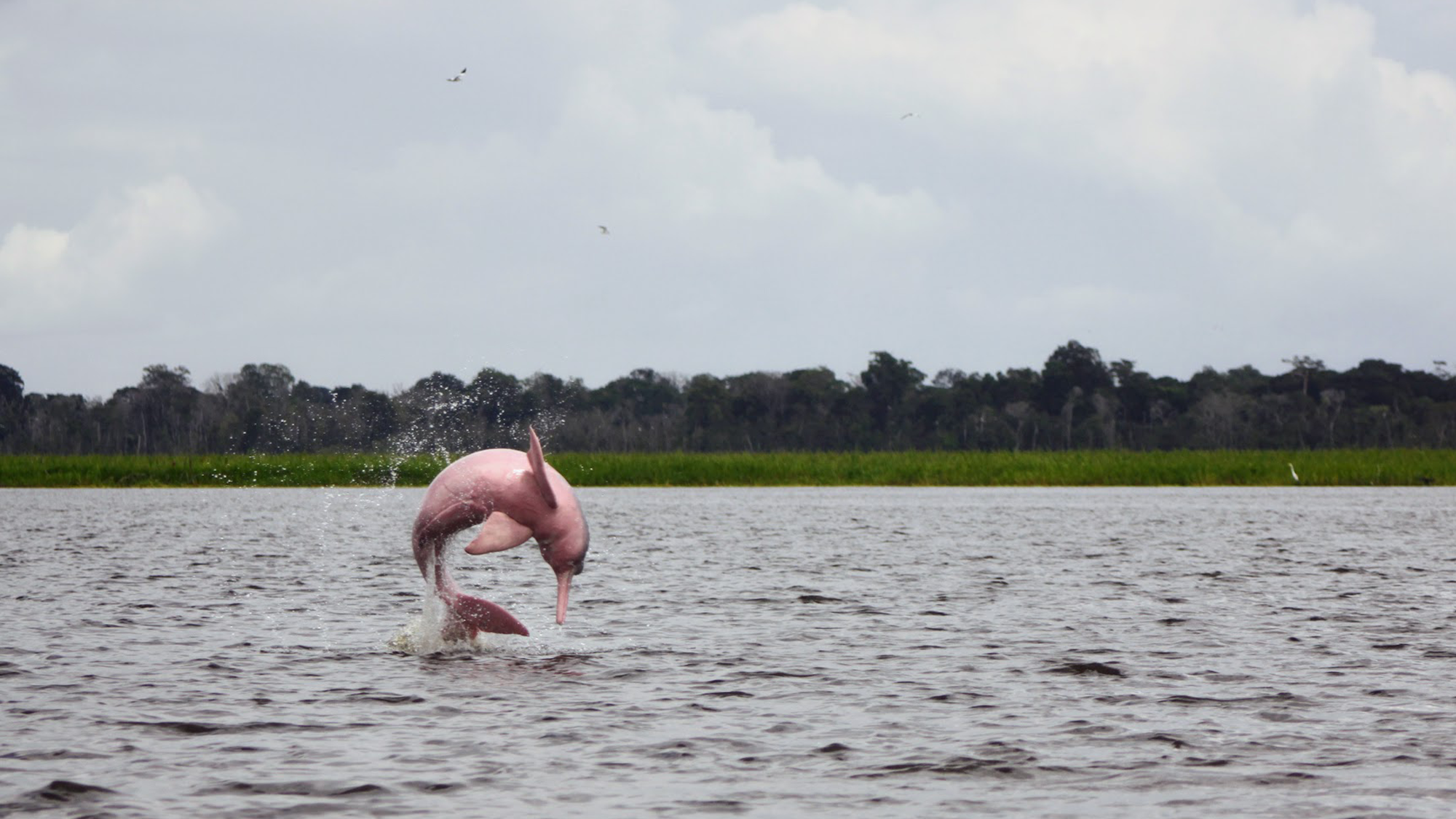

While the pink river dolphins of the Amazon Basin may look like the latest part of the marketing campaign for the smash-hit summer blockbuster Barbie, they are in fact very real freshwater mammals that live in some of the Amazon’s most inhospitable locales.
[Related: When humans and dolphins fish together, they both win.]
Along with their counterparts the tucuxi dolphins, the rare pink river dolphin is under threat from a number of forces. But listening in on their echolocation might be a key part in conserving the unique species, according to a study published July 27 in the journal Scientific Reports.
“Freshwater dolphins are under threat from climate change and human activities: overfishing, construction of dams, and illegal mining, and very little is known about their distribution and behavior when they enter the forest at the floated season,” study co-author and Universitat Politècnica de Catalunya in Barcelona bioacoustician Michel André tells PopSci. “The pink dolphin is the most ancient species of dolphins on Earth and presents unique adaptations to a freshwater habitat and to rainforest.”
During the region’s wet season (April to August) the tucuxi and the pink river dolphin–or boto in Portuguese–move into the floodplain forests called the várzea that border river channels in pursuit of freshwater fish to eat. This floodplain and its dense vegetation make it extremely challenging for scientists like André to survey the dolphins using boats or drones .
In the study, the team used five hydrophones submerged between 9.8 and 16 feet deep to survey 308 square miles of the Mamirauá Sustainable Development Reserve in Brazil where the Japurá and Solimõesrivers meet. They took recordings from river channels and confluence bays, floodplain lakes, and flooded forest at various times throughout the wet and dry seasons between June 2019 and September 2020.

After obtaining the recordings, the authors used deep learning algorithms called a convolutional neural network and sound data from boat surveys to automatically classify the detected sounds as either echolocation clicks from dolphins, boat engine noises, or rain. The analysis could detect echolocation with 95 percent accuracy, boat engine noises with 92 percent accuracy, and rainfall with 98 percent accuracy.
The team detected that the presence of dolphins increased from 10 percent of the bay to 70 percent in the bay and river channels when the water levels rose between November and January. They believe that the dolphins could be using these waterways as a way to enter the floodplain. Additionally, the boto adolescents and females with calves tended to spend more time in the floodplains than male dolphins, possibly due to the abundance of fish and other prey or as a shelter against the more aggressive behavior from males.
[Related: This dolphin ancestor looked like a cross between Flipper and Moby Dick.]
The results provide “a confirmation that monitoring dolphin populations in a rainforest habitat is feasible and essential for biodiversity,” says André.
The team hopes to develop low-cost bioacoustic equipment that can be permanently placed in the forest to better understand the relationship between aquatic and land environments. This constant monitoring could provide scientists with a better idea of the dolphins’ habitat preferences and conserve the region’s vital biodiversity.
